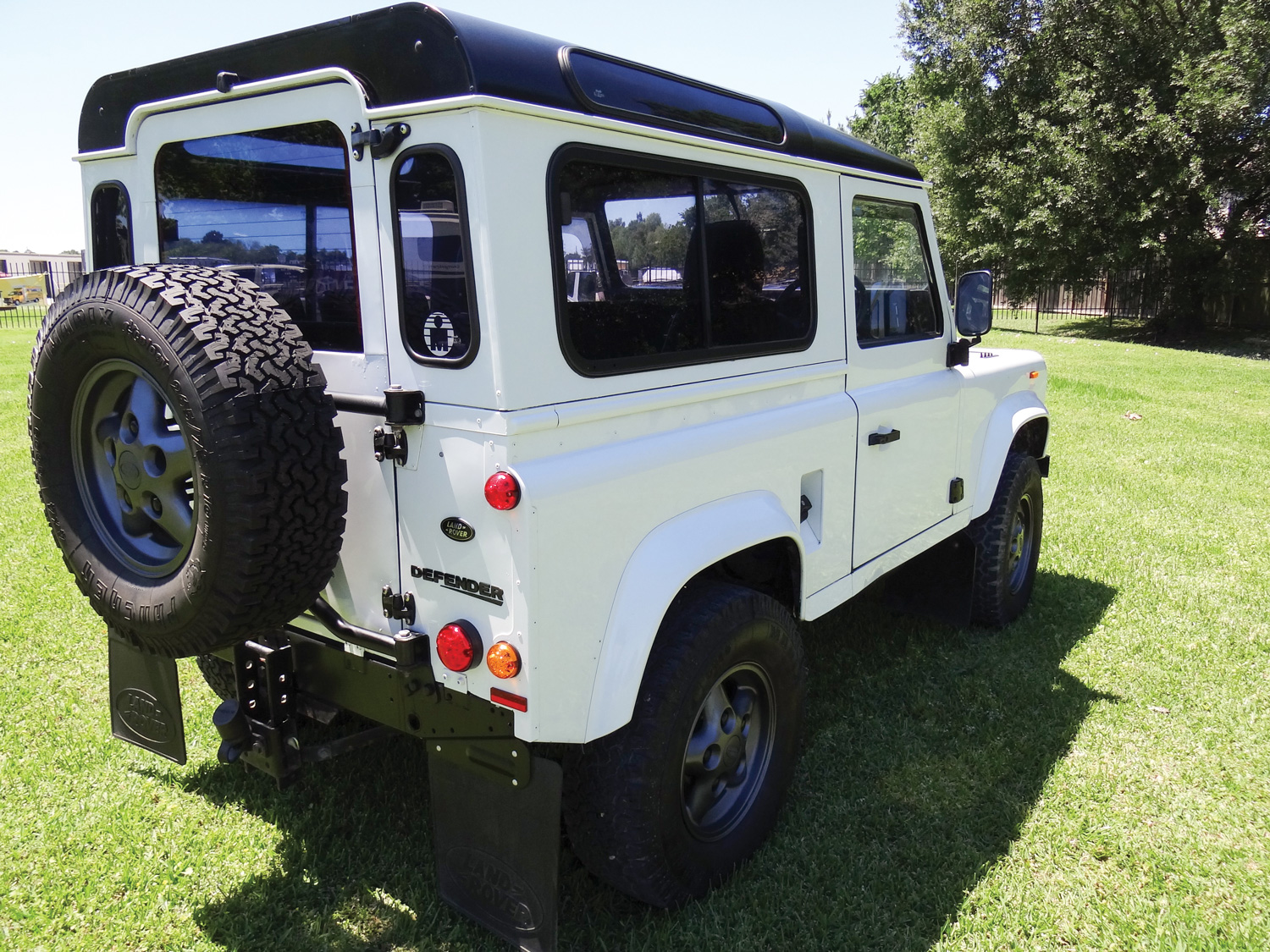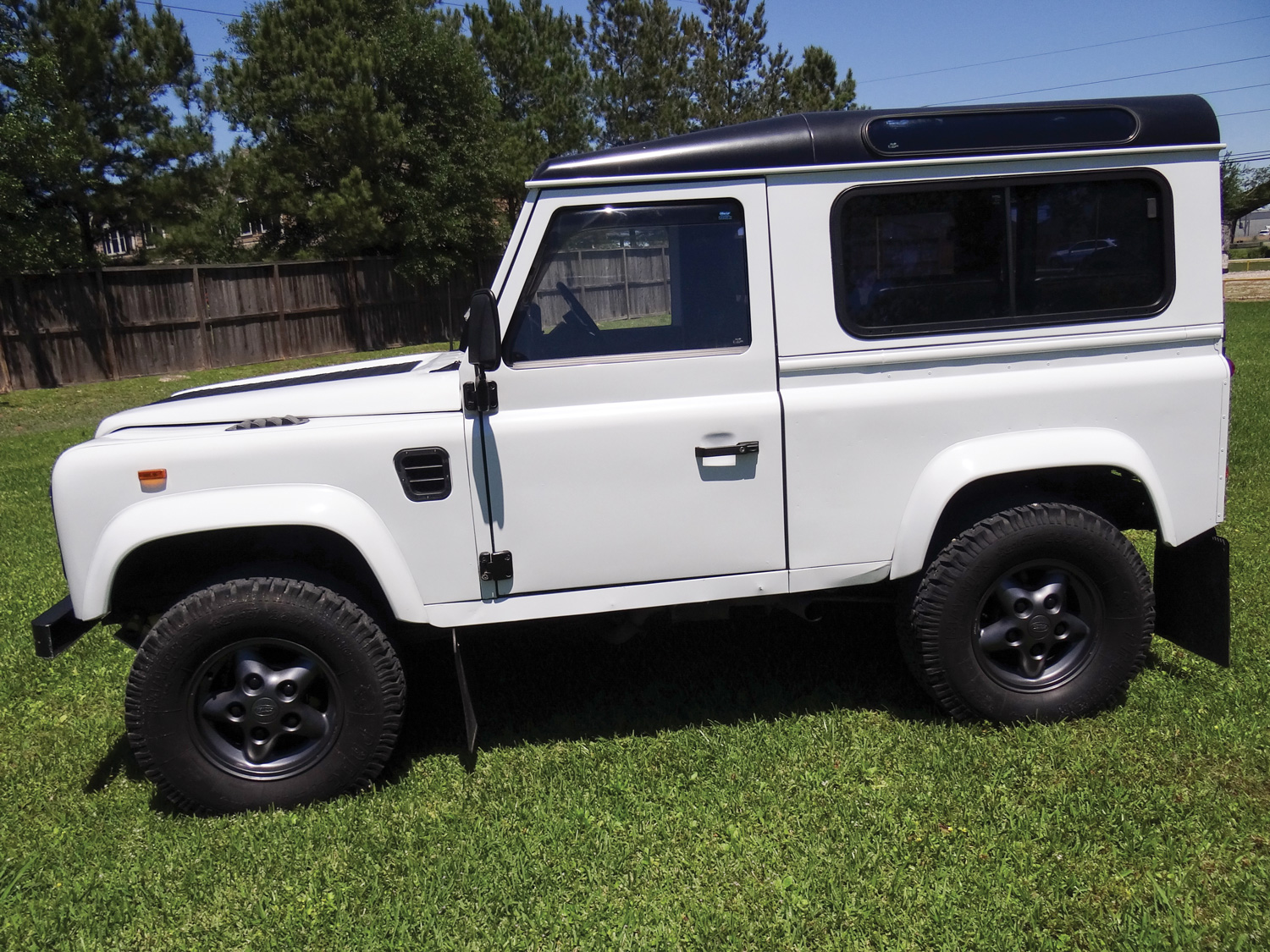The SUV market caught up, but the Land Rover 90 and 110 blazed the trail
Known for its fantastic off-road capability and elegantly blocky design, the Land Rover 90 and 110 evolved from the British brand’s original Spartan all-terrain vehicle, the Series I. Think of it like Britain’s take on the Jeep. Land Rover’s 90 and 110 design began after WWII and, being British, was far more civilized than America’s off-roader. It had exotic contraptions commonly known as “doors.” Enjoy nature while you’re on safari from the safe confines of an English interior! Honestly, there are lions out there.
Following up on the Series II and Series III, the 90 and 110, so named because of their wheelbase (in inches), brought coil springs for a better ride without sacrificing off-road capability. The 90 and 110 were built from 1983–90 and were never offered in the United States; that didn’t happen until the following generation, when the 90 and 110 both got the iconic Defender name. Even then, the Defender was only briefly sold in the U.S., from 1993–97, until airbag laws meant they were no longer eligible for import.
Still, a few 1983–90 Land Rover 90s and 110s have made it to the States, and they, like their later siblings, are loved by an enthusiastic community of off-roaders and overlanders. If you’re looking for a good example, Hagerty valuation specialist Andrew Newton weighed in to help sort out the dizzying amount of Defender variants. “There are a lot to choose from between wheelbase, body style, and engine,” he says. “Naturally, V-8s are worth the most with the four-cylinder gas-powered ones slotting below. The diesels are at the bottom.”



It turns out that buyers want power, and all the low-end grunt of a diesel doesn’t amount to much when you’re trying to keep up with traffic and get 4500 pounds of British steel up to speed. The top powerplant in Britain’s finest off-roader was designed by Buick in the ol’ U.S. of A.—for GM’s compact cars in the early ’60s. Buick also supplied V-8s to AMC for 1968–71 full-size Jeeps like the Wagoneer. While they’d eventually grow in displacement, the V-8 in the 90 and 100 was only 3.5 liters and produced only 136 horsepower. It seems low, even by 1990 standards, yet the naturally-aspirated diesel made just 69 hp.
As for the pecking order, there are a lot of other options to worry about, powertrains aside. Both left-hand-drive and ex-military models are priced slightly lower, while the more luxurious Country option brings a small premium. Newton explains that “90s are worth more than 110s. Soft tops are worth more than pickups. So a 90 soft top with a V-8 is the most desirable variant.”
Some notable auction sales show a wide spectrum of 90 and 100 values, from a $20,350 110 pickup and $24,200 restomod 90 to upfitted 110s that bring $88,000 and even $125,500. Later-model Defenders are known to bring even more, and these are among the few vehicles that can bring more when they’re modified than when they’re factory stock.
Prices for these Rovers saw their biggest gains from late 2010–early 2015, which was roughly the same time that vintage Toyota Land Cruisers saw similar gains, both of which predated the frenzy for vintage trucks and SUVs that we’ve seen more recently. Prices have remained relatively flat since then, as the rest of the vintage 4×4 marked has risen to match. Overall, median #2 (Excellent condition) values are up 3.5 percent over the past year, with a 1990 commanding $28,300. “The #4-condition (Fair) vehicles haven’t grown in value nearly as much; nobody wants a vintage Land Rover with issues,” Newton says.
These Land Rover’s low-volume status in the U.S. means that knowledgeable service technicians and parts for earlier models are both harder to come by than those for a Ford, Jeep, or Toyota, but you may be able to find a group of like-minded 4×4 enthusiasts in your area to help you keep your 90 or 110 on the trails.
It’s also OK to have a Jeep in your off-road group, just don’t get too chummy. Those chaps in the doorless contraptions will be easy pickings for wild animals.





